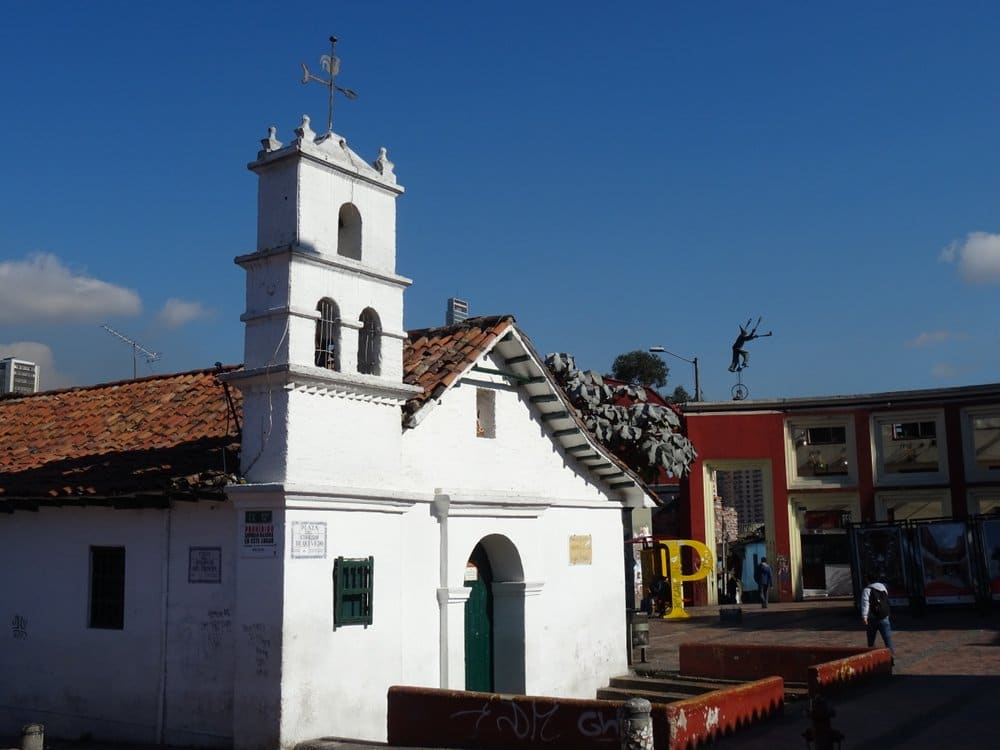Colombian architecture: a brief history about its diversity
Colombia is a country of diversity, incorporating different ecosystems and cultural manifestations. Colombian architecture is also filled with variety. Keep reading to learn more about the different architectural styles you can admire here.
A brief history of Colombian architecture
Most travelers expect incredible natural landscapes and astounding biodiversity when planning a trip to Colombia.
Why would they not? Colombia offers rainforests, mountains, deserts, beaches, and more. About 50.000 species of animals and plants of the Earth live in Colombia. It also ranks first in bird species. There are over 1.900 bird species here – almost 20% of the global total. Furthermore, we have the largest number of orchid species (4.270) worldwide, with 1.572 being endemic. It is no wonder this flower stands out among Colombian symbols.
However, there are also interesting examples of Colombian architecture to discover all over the country. They stem from four historical periods:
- Pre-Hispanic. Precedes the beginning of the 16th century, upon the arrival of the Spanish conquistadors. It is dominated by local indigenous communities.
- Covers almost three centuries of Spanish occupation, up to Colombia’s independence in 1819.
- Begins with the new Republic of Colombia and wanes toward 1930.
- Set in motion around 1930 and prevails in varying waves to this day.
Each period entails a characteristic style of Colombian architecture, dictated by the evolving local way of life.


Periods of Colombian architecture
Pre-Hispanic constructions in Colombia
Indigenous architecture in the country was focused on housing and worship. The natives made homes from guadua (a bamboo-like plant) or wood, sometimes covered with clay and roofed with hay or palm-tree leaves. Their places of worship were somewhat more developed, with stone constructions, tombs, and sculptures.
Today, you can visit surviving remains of this period in San Agustín, Tierradentro, Pueblito, and the Lost City of Teyuna.
Colonial Colombia
This style gave Colombian towns grid-like streets organized around a central space: the main square. It also birthed religious, civil, and military buildings that have become a staple of Colombian architecture.
If you visit Colombia, chances are you have your eyes on Cartagena. The seaside city is renowned for its stunning colonial buildings, such as the St. Catherine of Alexandria Cathedral, the Las Bóvedas market (originally a prison), and the San Felipe Castle.
Likewise, Bogotá has outstanding examples of colonial architecture. Leading locations include Simón Bolívar’s home (Quinta de Bolívar), the Santa Clara Church Museum, and the Chorro de Quevedo square.
Moreover, colonial flair is not exclusive to major cities in Colombia – small towns have it too. Barichara, dubbed the country’s most beautiful town, is a must-see because of its stone streets and whitewashed houses with clay-tiled roofs. Similarly, the UNESCO World Heritage site of downtown Mompox showcases Sevillian-influenced churches, roads, fountains, and squares.
The Republican style
The newly created Republic mixed its colonial roots with new ways of building, marked by emerging economic and social activities. Urban parks replaced old town squares as leisure became a part of everyday life. The government built new places to operate from, such as the National Capitol in Bogotá.
The town of Santa Fe de Antioquia, near Medellín, is a prime example of this hybrid style. It is home to temples, monuments, museums, parks, and squares of exposed bricks, sun-dried compacted clay walls, and stone floors.
Modern Colombian architecture
National modern architecture bloomed with new construction techniques using concrete, steel, and glass, especially in 1950. It was the time of grand-scale structures.
Such is the case with airports: Olaya Herrera in Medellín (1957), Ernesto Cortizzos in Barranquilla (1972), and El Dorado airport in Bogotá (1959). The latter underwent radical renovations (2007-2017) to update it according to current travel needs. Today, it holds a Skytrax four-star rating and is considered one of the best in South America.
Bogotá has great examples of modern Colombian architecture to admire, including:
- Torres del Parque residential complex
- Gabriel García Márquez Cultural Center
- Virgilio Barco Public Library
- Luis Ángel Arango Library
- Torre Colpatria
Medellín also has impressive examples of architecture. A historically industrial town, today it is the capital of fashion in Colombia, as well as a business and cultural epicenter. It showcases outstanding constructions:
- The headquarters of Bancolombia bank is an exceptional example of sustainable urban architecture.
- The Modern Art Museum is used as a true public, urban space.
- The armed-conflict history museum Casa de la Memoria is an example of storytelling-oriented design.
Explore Colombia and its architecture
Now that you know more about Colombia’s building style, all there is left to do is to see it yourself!
Discover your ideal itinerary for free!
At Lulo Colombia Travel, we create amazing travel itineraries that are tailor-made to your travel style and preferences.
Let us help you come up with an ideal route for your trip in Colombia. By answering the following short questions we will provide you on the spot with a free and personalized itinerary that will serve as a starting point for an unforgettable journey!
Discover your ideal itinerary for free!
At Lulo Colombia Travel, we create amazing travel itineraries that are tailor-made to your travel style and preferences.
Let us help you come up with an ideal route for your trip in Colombia. By answering the following short questions we will provide you on the spot with a free and personalized itinerary that will serve as a starting point for an unforgettable journey!
